
Bay Bridge Eastbound Deck Replacement Project
On October 27, 2022, the Maryland Transportation Authority (MDTA) Board approved a $140 million construction services contract for a portion of Phase 1 of the Eastbound Bay Bridge Deck Replacement project, which began major construction in late fall 2023 with anticipated completion in spring 2027. Consistent with MDTA’s 2015 Bay Bridge Life Cycle Cost Analysis, the deck replacement in the deck truss spans is the first phase in a series of projects during the next several decades to maintain safe and working order conditions for the 71-year-old span. The timing of future phases and other projects will depend on available funding and bridge conditions.
Phase 1 of the Eastbound Bay Bridge Deck Replacement project includes the replacement of the deck floor system, barrier upgrades, structural rehabilitation of the steel superstructure, replacement of the suspension span barrier wall, lane use signal gantry replacements and utility relocations, as well as off-site stormwater management work.
The MDTA designed the project to ensure minimal traffic impacts for residents and motorists by avoiding 24/7 lane closures. The new pre-cast deck sections were fabricated off-site and barged to the Bay Bridge. Marine-based equipment has been utilized to replace deck panels and minimize the use of lane closures for most deliveries, resulting in reduced traffic impacts. As of summer 2025, the deck panels on the Eastern Shore side of the eastbound span have been replaced. Additional work to replace the temporary connections between deck panels with permanent concrete connection slabs will be ongoing through winter 2025.
In summer 2025, the MDTA updated the Bay Bridge Eastbound Deck Replacement project timeline to include additional truss strengthening work west of the suspension span and the replacement of the suspension span barrier wall. This work has been added to the current contract, as the contractor has already completed truss strengthening east of the suspension span. By incorporating this work now, MDTA is taking advantage of cost savings from using equipment already on-site, ensuring efficient use of resources while maintaining the project's high standards. We appreciate your understanding as we work to enhance the safety and longevity of this critical infrastructure.

ATTENTION WATERWAY USERS AROUND THE BAY BRIDGE
PLEASE SLOW DOWN FOR SAFETY
6-knot speed limit now being enforced
Wakes created by speeding boats can create major hazards for bridge operations and workers. Calm waters are essential to keeping workers and other waterway users safe.
MAKE NO WAKE
Please help ensure everyone’s safety in the construction area:
- Slow down
- Use extreme caution
- Steer clear of construction vessels
NO WAKE ZONE: A new 6-knot speed limit is now in effect 1,000 feet north and south of the Bay Bridge. Shipping channel not affected.
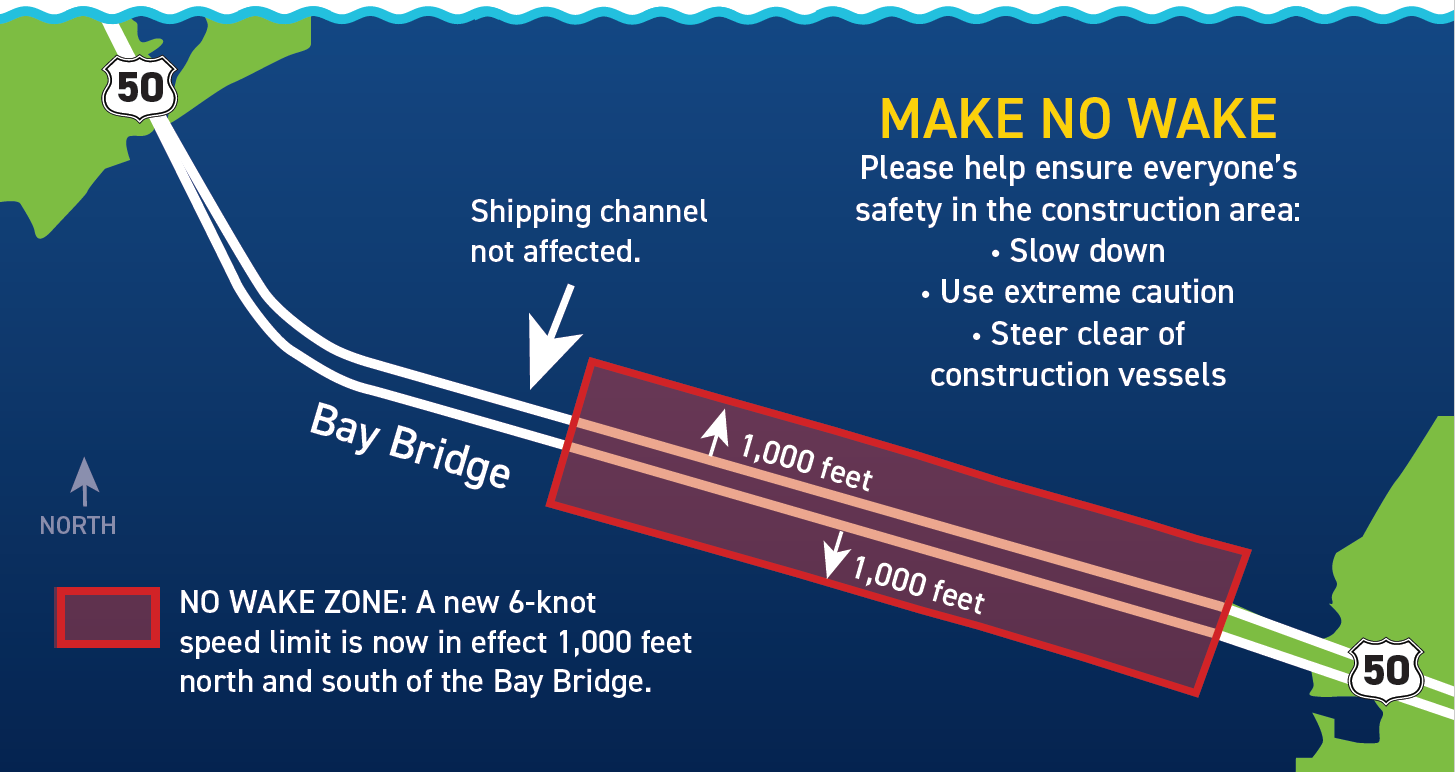

- Eastbound Bay Bridge Deck Replacement Project Video Update (December 2024)
- Driver Update 07-01-2024 (PDF Download)
- Driver Update 04-12-2024 (PDF Download)
- Make No Wake Flyer (PDF Download)
- Crane Arrival at Bay Bridge Signals Advance Work for First Section of Multi-Year Eastbound Deck Replacement 03-07-2023 (News Release)
- MDTA Board Approves Contract for Eastbound Bay Bridge Deck Replacement 10-27-2022 (News Release)
- BBRAG Webpage
For real time traffic information call 1-877-229-7726 (BAYSPAN)
.
The Eastbound Bay Bridge Deck Replacement project includes replacing the deck floor system, barrier upgrades, structural rehabilitation of the steel superstructure, replacement of the suspension span barrier wall, lane use signal gantry replacements and utility relocations, as well as off-site stormwater management work.
Construction Elements
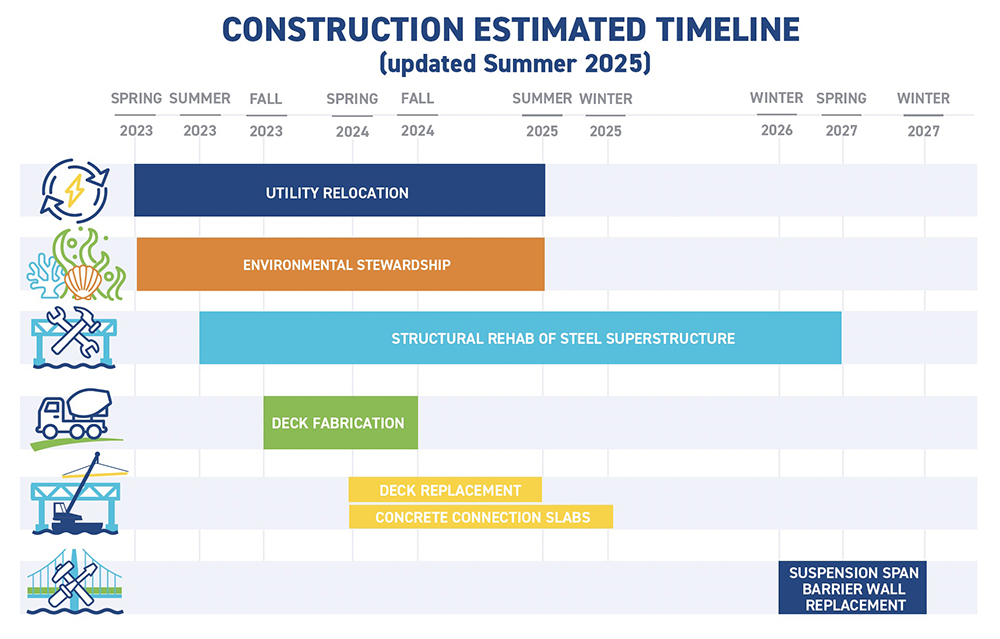
Construction Estimated Timeline:
(Updated Summer 2025)
- UTILITY RELOCATION - SPRING 2023 THRU SUMMER 2025
- ENVIRONMENTAL STEWARDSHIP - SPRING 2023 THRU SUMMER 2025
- STRUCTURAL REHAB OF STEEL SUPERSTUCTURE - SUMMER 2023 THRU SPRING 2027
- DECK FABRICATION - FALL 2023 THRU FALL 2024
- DECK REPLACEMENT - SPRING 2024 THRU SPRING 2025
- CONCRETE CONNECTION SLABS - SPRING 2024 THRU WINTER 2025
- SUSPENSION SPAN BARRIER WALL REPLACEMENT - WINTER 2026 THRU WINTER 2027
Construction Element Fact Sheets:
- Construction Sequence - Utility Relocation (PDF Download)
- Environmental Stewardship Fact Sheet – Artificial Reef (PDF Download)
- Environmental Stewardship Fact Sheet – Stormwater Management (PDF Download)
- Construction Sequence – Structural Rehabilitation of the Steel Superstructure (PDF Download)
- Construction Sequence - Deck Fabrication (PDF Download)
- Construction Sequence - Deck Replacement (PDF Download)
- Construction Sequence - Suspension Span Barrier Wall (PDF Download)
- Crane Arrival at Bay Bridge Signals Advance Work for First Section of Multi-Year Eastbound Deck Replacement 03-07-202 (News Release)
- MDTA Board Approves Contract for Eastbound Bay Bridge Deck Replacement 10-27-2022 (News Release)
Keeping Boaters Safe
Recreational and commercial mariners are strongly advised to adhere to the following guidelines:
- Use caution when transiting the area and observe 6-knot speed limit from 1000 feet north and south of the bridge to create MINIMAL WAKE and maintain safety around the construction area.
- The shipping channel remains open within the main span of the bridges during construction operations. Sign up for mariner alerts to receive details and updates.
- Stay clear of all overhead work and maintain a safe distance of 300 feet from all construction equipment and support vessels at all times.
- No unauthorized vessels are allowed in the safety zone surrounding construction barge mooring locations.
Emergency
For an emergency, dial 911.
Non-Emergency
For non-emergency issues or to report a disabled vehicle, dial #77.
Contacting the Maryland Transportation Authority
Via email: [email protected]
Via phone from 8:30 a.m. to 5 p.m. weekdays: 410-537-1000
Toll-free: 1-866-713-1596
For real time traffic information, call 1-877-BAYSPAN (229-7726).




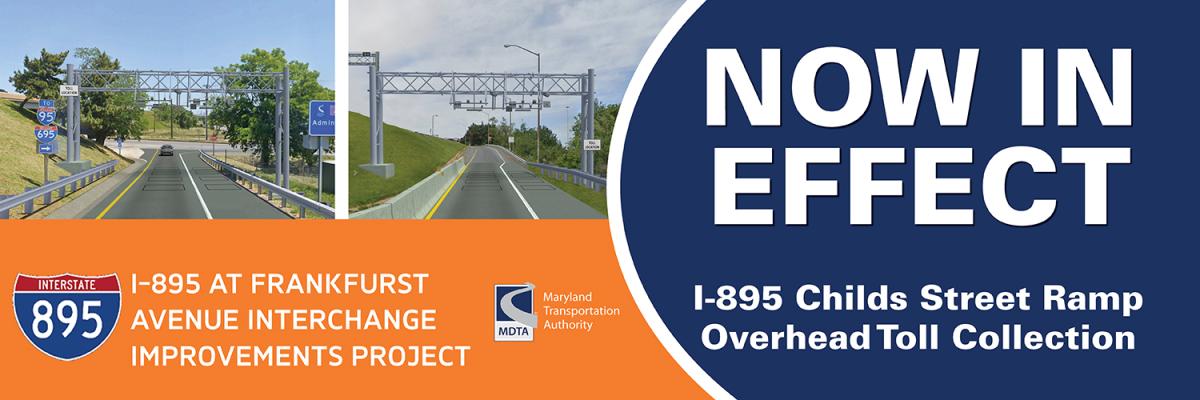
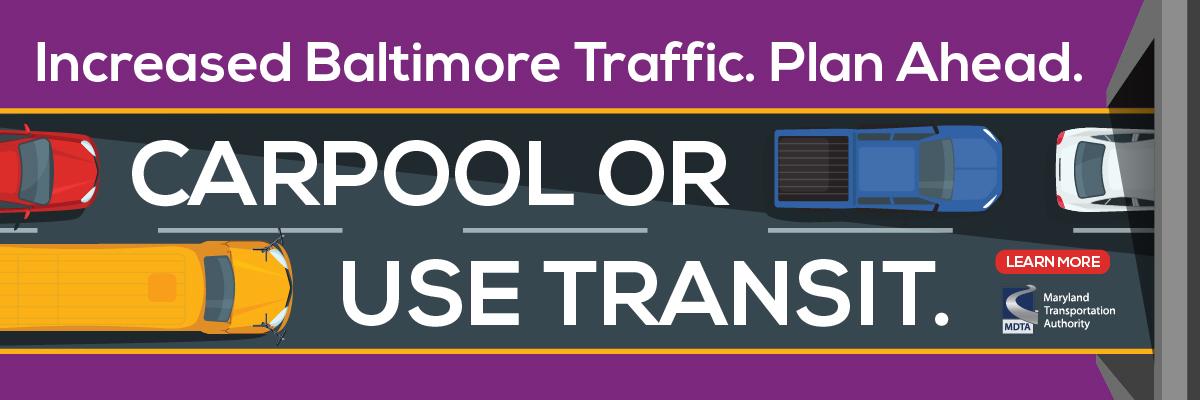

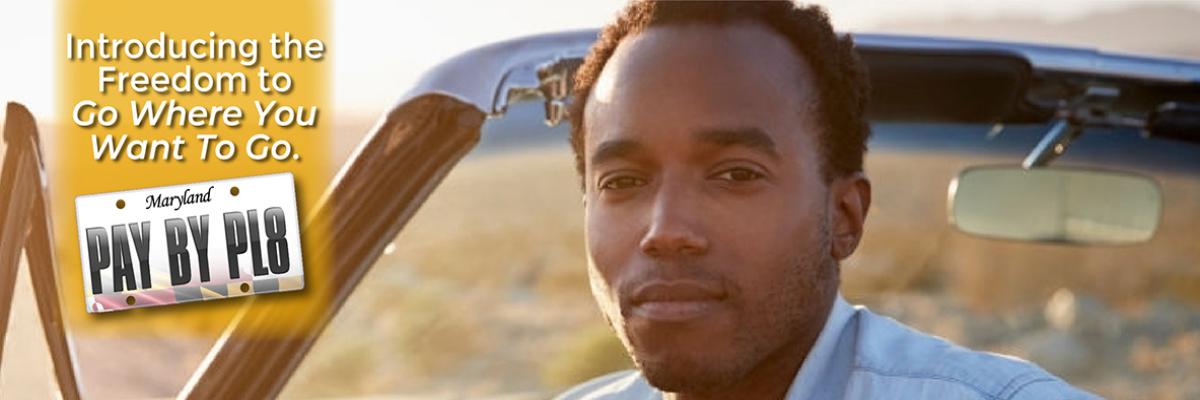
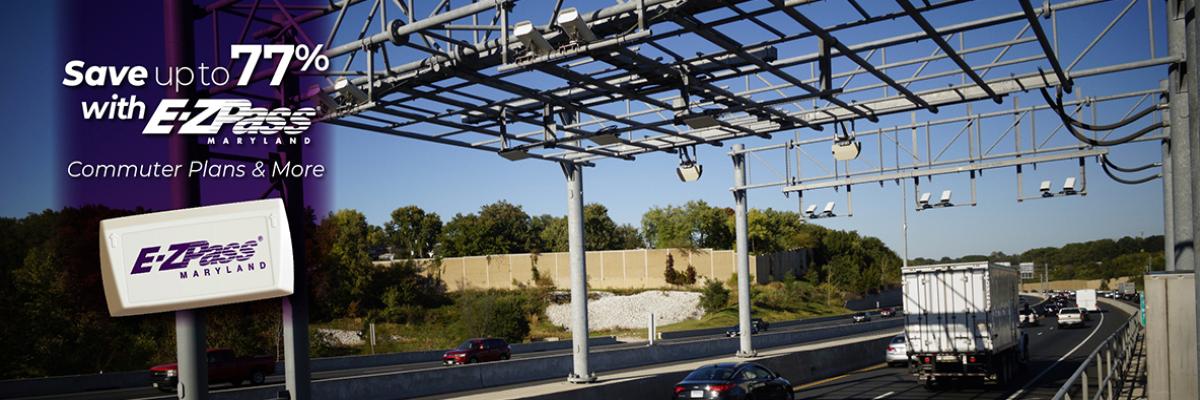
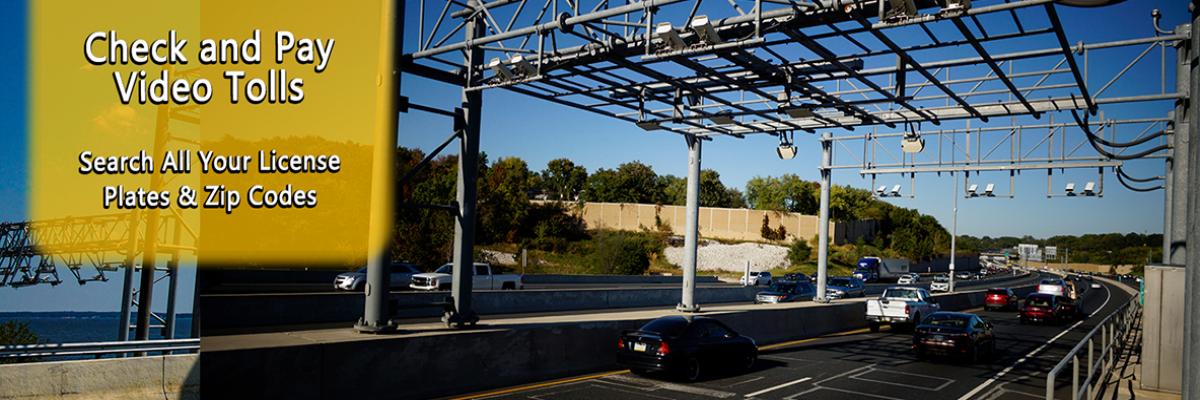







.jpg)
